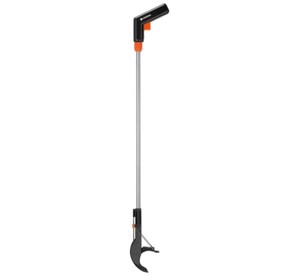


Description
Book by Simon Klingen - Twelve Forest Lessons for Understanding Forest Management
Twelve forest lessons light-heartedly and inspiringly describe the work of a forest manager, what does he or she do, what is there to choose and how does this influence the forest? How do trees grow and what is the effect of wood harvesting? But also: what does an unmanaged forest look like?
Not only the profession of the manager, but also the forest will live more for the reader!
Forestry, how do you do? ##
Forest builders manage forests by intervening. They saw trees because thinning is necessary, or to rejuvenate the forest. In twelve forest lessons you will gain insight into the considerations a forest manager makes.
Forest managers ensure that our forests remain healthy and vital. Because trees grow, and compete with each other for light or nutrients, they sometimes intervene by sawing. They do this to thin out or rejuvenate forests. When thinning out, they create growth space for favourite trees; when rejuvenating, it's about making room for a new forest. With twelve forest lessons Simon Klingen explains the choices a forest manager makes. What is the purpose of forest management? How do you intervene? And what choices do you make?
Thin and rejuvenate
The first two lessons are an introduction to the forest. How does the competition between trees work? Oak and beech are the two popular tree species of the forest. But in the competition, the oak tree will usually compete with the beech. An oak tree has a greater need for light. If you want an oak forest, you have to intervene. Thinly, make sure there's light. But how thin do you thin? Which trees do you choose? And when do you intervene? That's explained in the thinning and rejuvenating lessons.
Forest management
Do you always have to intervene? For a long time, forest management has focused on timber production, with a lot of sawing and thinning. But from the seventies, when organisations such as 'Stichting Kritisch Bosbeheer' (Critical Forest Management Foundation) challenged management, management changed. Management is now often more focused on strengthening biodiversity. Lesson 6 discusses the choices you make in management.
Lessons 7 to 11 explain how to respond to the various management objectives - more biodiversity or wood production. Lesson 10 is about harvesting wood. Dutch forests produce approximately 7 m³ of wood per year.
Wood harvest
Because we harvest less wood than we grow, there is now more wood in the forest than before. Vakblad Natuur Bos Landschap explains how you can measure the wood volume of trees in the article 'Measuring wood volume'. And in an infographic 'De weg van het Nederlandse hout' (The path of Dutch wood) the magazine shows how the sale of Dutch wood takes place.













